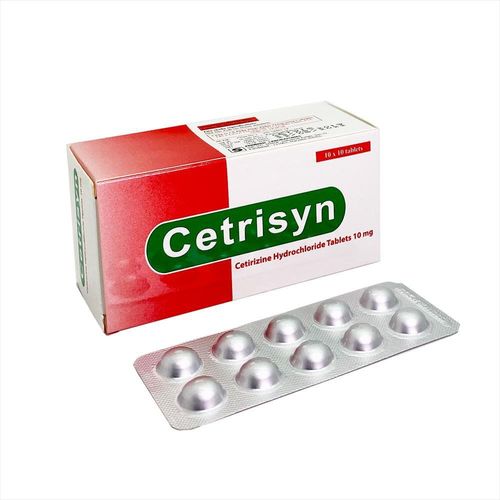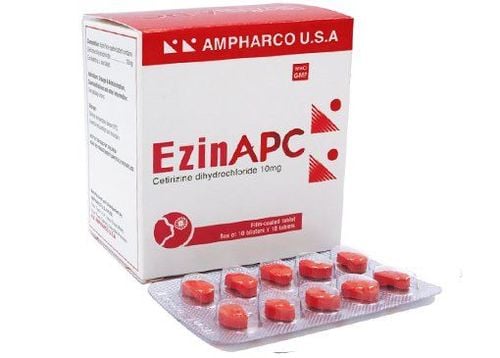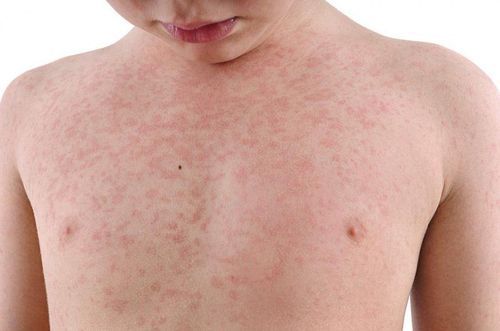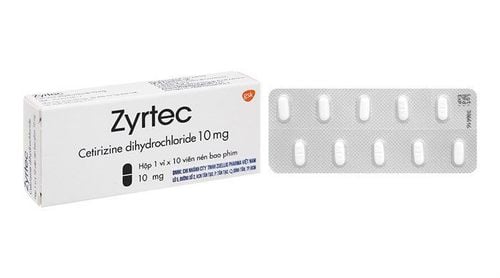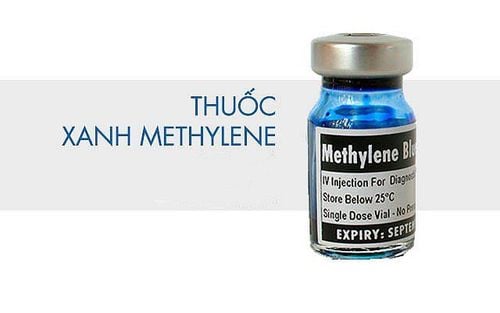This is an automatically translated article.
Freenos Junior is used in the treatment of allergic rhinitis and other allergic symptoms such as: rash, urticaria, itching, ... The drug has the main ingredients Pseudoephedrine hydrochloride and Chlorpheniramine.
1. What is Freenos Junior?
What is the drug Freenos Junior? Freenos Junior is prepared in the form of syrup in a box of 1 bottle of 60ml. The drug belongs to PT Ferron Par Pharm - INDONESIA A.
Freenos Junior has the main ingredients Pseudoephedrine hydrochloride 15mg/5ml and Chlorpheniramine maleate 5ml.
2. The effects of the drug Freenos Junior
2.1. Pseudoephedrine's Mechanism of Action and Indications The mechanism of action of Pseudoephedrine is through its sympathomimetic action to relieve congestion.
Pseudoephedrine has direct and indirect sympathomimetic effects, making it an effective decongestant in the upper respiratory tract. Pseudoephedrine is much weaker than ephedrine in its effects on increasing systolic blood pressure, tachycardia, and central nervous system stimulation. Pseudoephedrine is indicated for the relief of symptoms associated with allergic rhinitis and the common cold including sneezing, runny nose, nasal congestion, itching and watery eyes.
2.2. Effects and indications of ingredients Chlorpheniramine Chlorpheniramine is an antihistamine with very little sedative effect. As with most antihistamines, chlorpheniramine also has an anti-acetylcholine side effect, but this effect varies widely between individuals.
Chlorpheniramine effects through competitive blocking of H1 receptors of effector cells.
2.3. Indications for use of the drug Freenos Junior Freenos Junior is used in the following cases:
Seasonal allergic rhinitis and year-round allergic rhinitis. Treatment of other allergic symptoms such as: Histamine vasomotor rhinitis, urticaria, allergic conjunctivitis, contact dermatitis, Quincke's edema, angioedema, food allergies, serum reactions, patients with Insect stings, itching from measles or chickenpox. Currently, on the market, Chlorpheniramine is often combined with some preparations to treat cough and cold symptoms. However, Freenos Junior is not effective in the symptomatic treatment of viral infections.
3. Contraindications to taking Freenos Junior
Freenos Junior should not be used in the following cases:
Patients with a history of allergy or hypersensitivity to Chlorpheniramine or any of its ingredients. Patients with acute asthma attacks. The patient has an enlarged prostate gland. Narrow angle glaucoma. Bladder neck obstruction. Gastric ulcer Pyloric - duodenal obstruction. Nursing Mothers Newborns and premature infants Patients receiving MAO inhibitors within 14 days up to the time of treatment with Freenos Junior because the anticholinergic properties of Chlorpheniramine are enhanced by other substances. MAO inhibitors.
4. Dosage - how to take Freenos Junior
Treatment of seasonal allergic rhinitis: Patients should use Freenos Junior continuously and start using it right from the pollen season.
Adults: Start taking 4mg of Freenos Junior at bedtime, then slowly increase over 10 days to 24mg of Freenos Junior/day, if tolerated, in 2 divided doses, until the end of the season. Children (2-6 years old): Take 1mg of Freenos Junior, 4-6 hours/time, use up to 6mg of Freenos Junior/day; 6 - 12 years: Initially take 2mg of Freenos Junior at bedtime, then gradually increase over 10 days, up to 12mg of Freenos Junior/day, if tolerated, in 1-2 divided doses, use Freenos Junior until the end of the season. Acute allergic reaction: The recommended dose is 12mg of Freenos Junior, divided into 1-2 doses. Uncomplicated allergic reactions: Recommended dosage 5 - 20mg Freenos Junior. It should be administered intramuscularly, subcutaneously or intravenously. Supportive treatment in anaphylaxis: The recommended dose is 10 - 20mg of Freenos Junior, intravenously. Allergic reactions to blood or plasma transfusion: The recommended dose is 10 - 20 mg of Freenos Junior, up to a maximum of 40 mg of Freenos Junior/day, administered subcutaneously, intramuscularly, or intravenously. Elderly people: Use a dose of 4mg Freenos Junior, divided into 2 times/day; The duration of action of Freenos Junior can be up to 36 hours or more, even at low serum concentrations.
5. Side effects when using the drug Freenos Junior
During the use of Freenos Junior, patients may experience some side effects such as:
Drowsiness Dry mouth - nose - throat Nausea, vomiting, constipation, loss of appetite Headache Increased chest congestion Having vision problems Dysuria
6. Interaction of Freenos Junior with other drugs
Freenos Junior when combined with some of the following drugs may occur drug interactions:
Combining Freenos Junior with monoamine oxidase inhibitors can prolong and increase the anti-acetylcholine effect of antihistamines. Ethanol or other sedative-hypnotics in combination with Freenos Junior may enhance the CNS depressant effects of Chlorpheniramine. Chlorpheniramine with Freenos Junior inhibits phenytoin metabolism and may lead to phenytoin toxicity. Freenos Junior is used in the treatment of allergic rhinitis and other allergic symptoms such as: rash, urticaria, itching, ... The drug has the main ingredients Pseudoephedrine hydrochloride and Chlorpheniramine. To ensure the effectiveness of treatment and avoid unwanted side effects, patients need to strictly follow the instructions of the doctor, professional pharmacist.
Follow Vinmec International General Hospital website to get more health, nutrition and beauty information to protect the health of yourself and your loved ones in your family.
Please dial HOTLINE for more information or register for an appointment HERE. Download MyVinmec app to make appointments faster and to manage your bookings easily.




